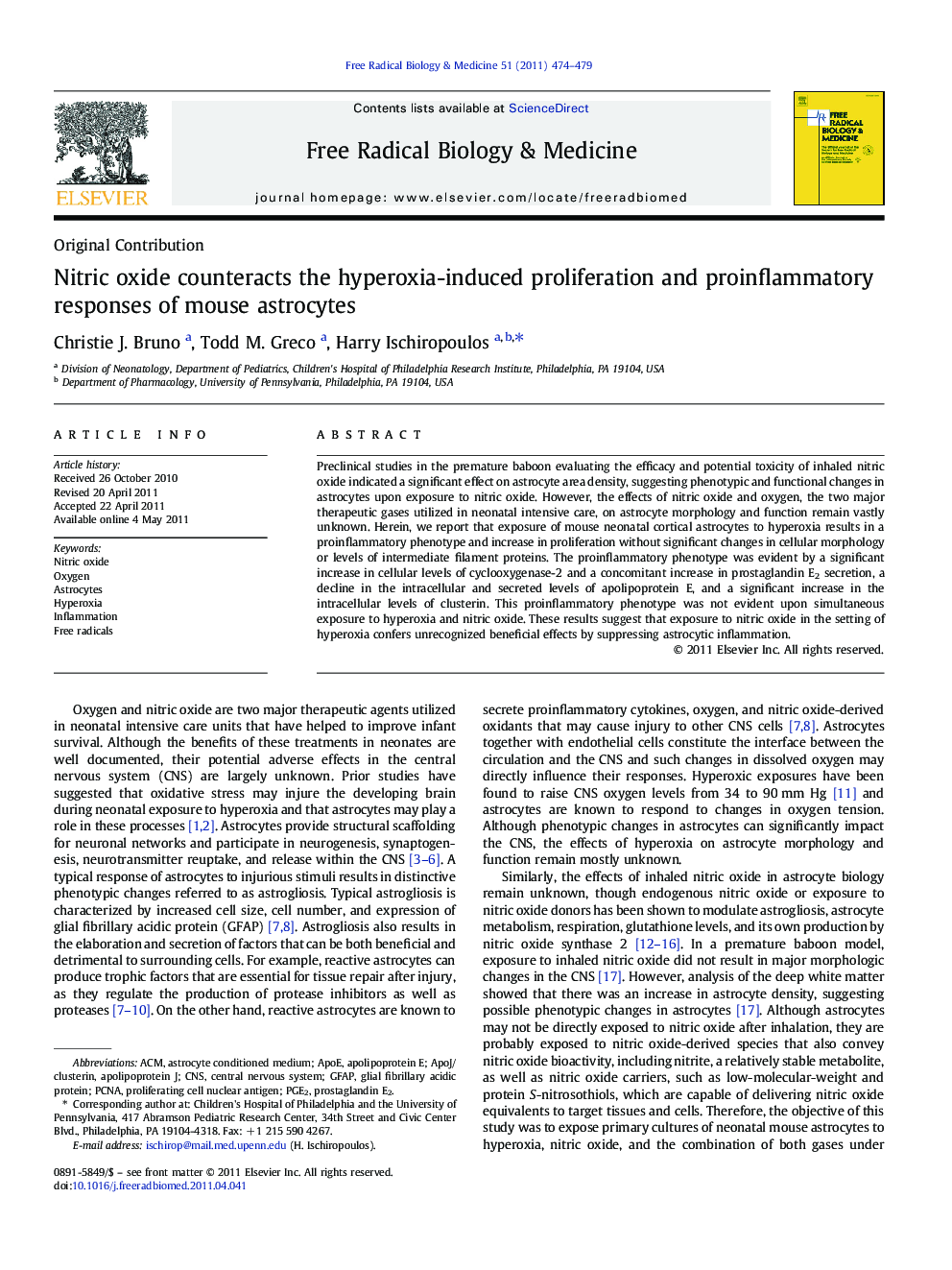| Article ID | Journal | Published Year | Pages | File Type |
|---|---|---|---|---|
| 10738080 | Free Radical Biology and Medicine | 2011 | 6 Pages |
Abstract
Preclinical studies in the premature baboon evaluating the efficacy and potential toxicity of inhaled nitric oxide indicated a significant effect on astrocyte area density, suggesting phenotypic and functional changes in astrocytes upon exposure to nitric oxide. However, the effects of nitric oxide and oxygen, the two major therapeutic gases utilized in neonatal intensive care, on astrocyte morphology and function remain vastly unknown. Herein, we report that exposure of mouse neonatal cortical astrocytes to hyperoxia results in a proinflammatory phenotype and increase in proliferation without significant changes in cellular morphology or levels of intermediate filament proteins. The proinflammatory phenotype was evident by a significant increase in cellular levels of cyclooxygenase-2 and a concomitant increase in prostaglandin E2 secretion, a decline in the intracellular and secreted levels of apolipoprotein E, and a significant increase in the intracellular levels of clusterin. This proinflammatory phenotype was not evident upon simultaneous exposure to hyperoxia and nitric oxide. These results suggest that exposure to nitric oxide in the setting of hyperoxia confers unrecognized beneficial effects by suppressing astrocytic inflammation.
Keywords
Related Topics
Life Sciences
Biochemistry, Genetics and Molecular Biology
Ageing
Authors
Christie J. Bruno, Todd M. Greco, Harry Ischiropoulos,
